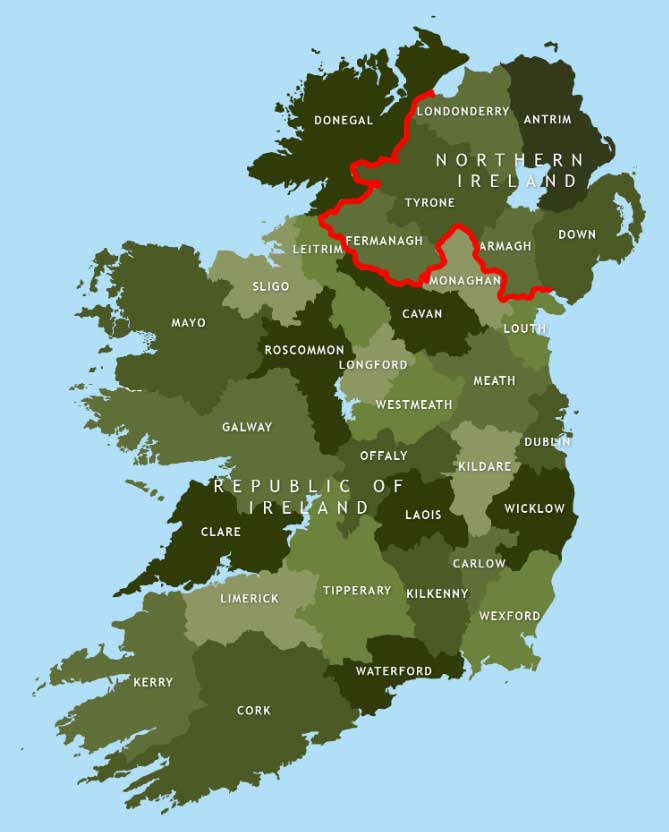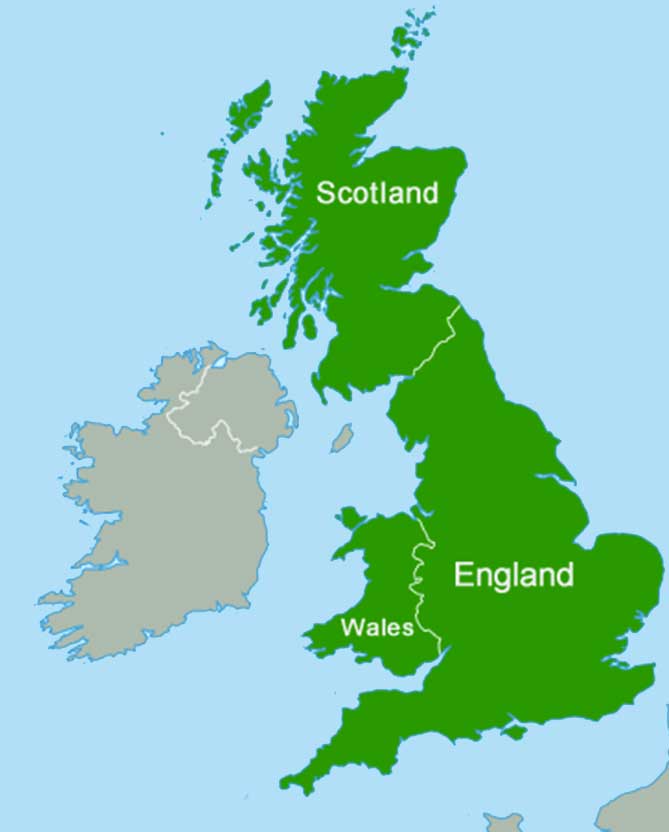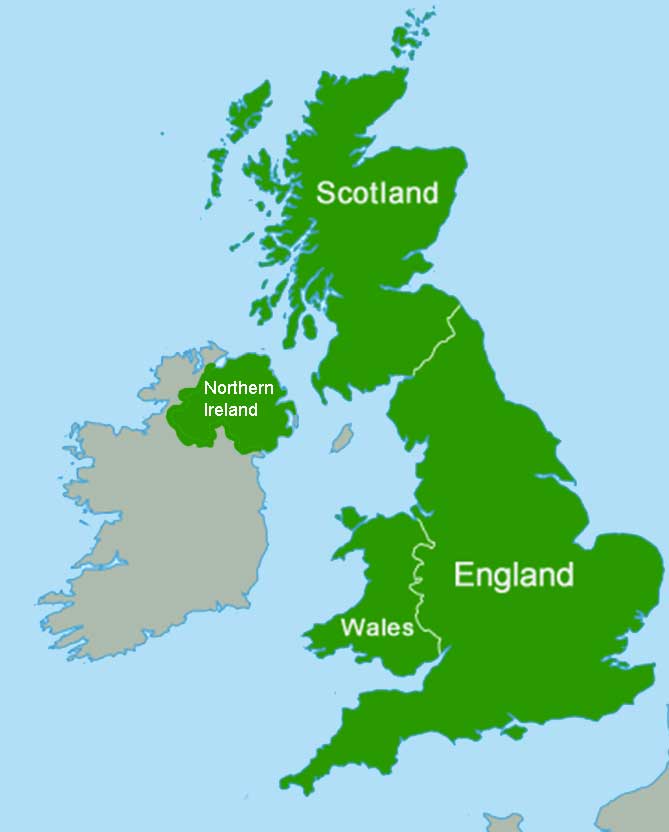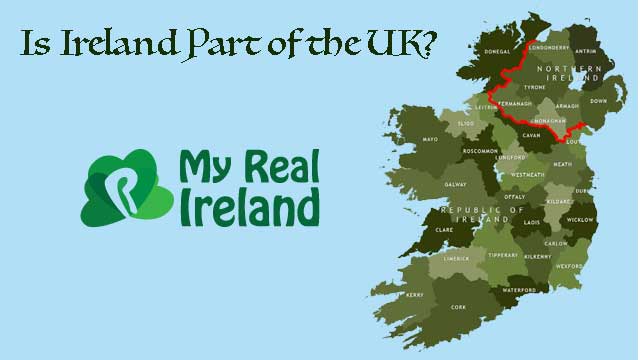Well, it depends. If you’re talking about Northern Ireland, the answer is yes. But if you’re talking about the Republic of Ireland, then, no. If, however, you’re wondering about the Island of Ireland, then…maybe.
The terms England, Great Britain, United Kingdom, and so on, have been mistakenly used interchangeably over the years, which has just added to the general confusion about geography and politics regarding the islands in northwestern coastal Europe.
The same misunderstanding arises when people say “Ireland” in reference to the whole island, either failing to identify the two individual countries that make up for the total territory, or using it as short for the Republic of Ireland.

Republic of Ireland Counties
- Carlow
- Cavan
- Clare
- Cork
- Derry
- Donegal
- Dublin
- Galway
- Kerry
- Kildare
- Kilkenny
- Laois
- Leitrim
- Limerick
- Longford
- Louth
- Mayo
- Meath
- Monaghan
- Offaly
- Roscommon
- Sligo
- Tipperary
- Waterford
- Westmeath
- Wexford
- Wicklow
Northern Ireland Counties
- Antrim
- Armagh
- Derry (North know it as Londonderry)
- Down
- Fermanagh
- Tyrone
Whatever the case, the confusion runs deep, and the comprehension of each of these terms, the slight but important both geographical and political differences that they entail, is vital to understanding the vast history carried by the British Isles, which, by the way, are more than 6,000. Let’s take a look at how they differ and how they are linked to one another, and why you might be using the term Ireland’ wrong.
The British Isles
In simple terms, this is the name given to the more than 6,000 islands located in the North West coast of Europe. The British Isles include Ireland, Great Britain, The Isle of Man, The Channel Islands, and smaller ones such as Skye and Anglesey.
British Overseas Territories
During the former British Empire, the crown occupied and colonized many territories around the globe. Regardless of the Empire no longer existing, some of these territories are still subjects to British rule. They recognize the British Monarch as head of state, however, they are internally self-governing. A few examples are Anguilla, Bermuda, Cayman Islands, and Gibraltar.
Great Britain

Geographically speaking, Great Britain is an island nestled between the English Channel and the North Sea, with a distance of about 20 miles from the European continent on its narrowest point. It is part of the British Isles, being the biggest of the group.
Sometimes it is referred as simply Britain’, and this has a lot to do with the origin of its name. Britain comes from Britannia, a Roman word, which back then was used to make reference to the female personification of the island.
As to why the addition of Great’, the explanations are varied and unclear. Some think that it was simply due to the fact that it was the greatest (largest, in context) of the islands, others that it was necessary in order to avoid confusions with the French territory of Brittany.
The one theory that stands the most, however, is that King James I wanted everyone subjected to his rule to have no doubts that he was King of the entire island, not only some parts, hence why he was referred to as “King of Great Britain”.
The United Kingdom

Here is where the confusion begins. Beforehand, it is important to establish that in the Island of Great Britain, there are different countries: Wales, England, and Scotland. The term United Kingdom of Great Britain, or U.K. makes reference to the sovereign state conformed by these previous three countries plus the country (sometimes described as region or province) of Northern Ireland.
The establishment of the United Kingdom of Great Britain and Northern Ireland goes back to 925, when the Kingdom of England was formed from the junction of Anglo-Saxon tribes. Wales was added in 1536, with Scotland and Northern Ireland officially becoming part of the Kingdom in 1801 and 1922, respectively.
These four countries retain certain autonomy and control over issues such as education and housing, but bigger matters like foreign policy is overseen by the U.K. Parliament. Although they stand as one with the Crown, they have kept their own individual identities, as is the case of Welsh being the official language of Wales. The capital of the U.K. as a whole is London.
Ireland
The main issue with Ireland, or why people are most of the time not sure which territory they are talking about when they say Ireland, it’s because the term has been widely generalized.
Strictly, the term Ireland’ makes reference to the whole island (yes, one of the 6,000 of the British Isles, situated right next to Great Britain), encompassing both Northern Ireland and the Republic of Ireland. That is the main reason of why some people are often struggling to identify if whether Ireland is part of the U.K. or not.
Northern Ireland, situated in the northeast side, is part of the U.K. and many of its citizen identify as British. As it happens with Wales and Scotland, Northern Ireland is bound to the Crown but keeps authority over devolved matters.
The Republic of Ireland, officially declared so in 1949, is an independent state in the south part of the territory and it occupies most of the island. It shares a border in the north with Northern Ireland, but they are separate countries and the Republic of Ireland it’s not part of the United Kingdom.
Being a sovereign country, it has its own membership of both the United Nations and the European Union, as well as with the rest of other international organizations. In this case, for example, Brexit will not affect the status of the Republic of Ireland as a member of the European Union, although issues regarding the border with Northern Ireland have raised a lot of questions.
‘Ireland’ is often used to make reference to The Republic of Ireland, but as mentioned before this term is officially the name of the island as a whole.
So, in summary: The U.K. is a sovereign state that includes England, Wales, Scotland, and Northern Ireland; Great Britain (or simply Britain) is an island; Ireland is an island situated next to Great Britain, which is divided in two countries: The Republic of Ireland, and Northern Ireland. Northern Ireland is part of the U.K., but the Republic of Ireland is not; and the British Isles is the collective group of over 6,000 islands.

